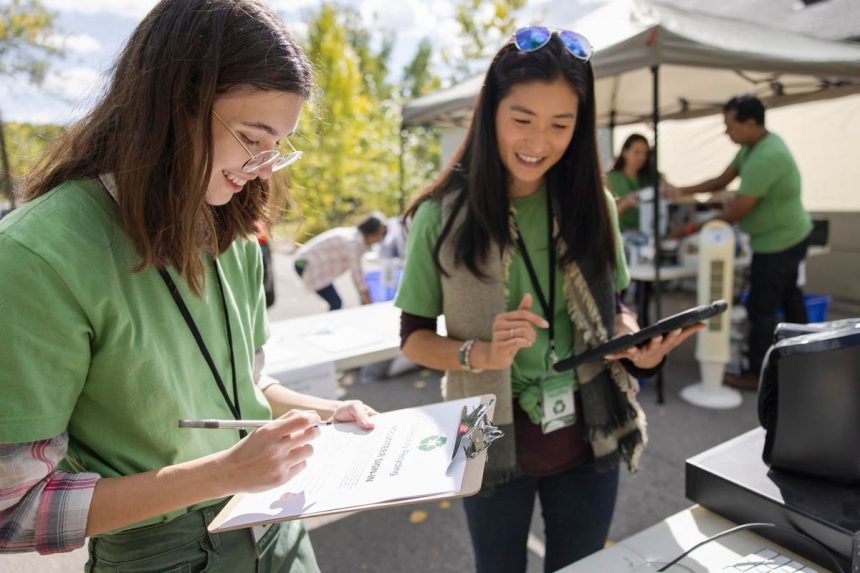Volunteers play a critical role in nonprofit organizations. Their commitment to offering assistance and dedicating time to their communities helps these organizations make significant headway on set goals. Consequently, the energy involved in maintaining these efforts can take its toll and result in volunteers eventually becoming less engaged in supporting the mission of a nonprofit.
With the right approach, nonprofits can maintain the support of volunteers for the long term. To help, 18 Forbes Nonprofit Council members each share one strategy nonprofit leaders can leverage to ensure their volunteers remain enthusiastic and engaged in the work they do for nonprofits.
1. Determine What Volunteers Want From The Experience
Figure out why your volunteers are there in the first place. Most of them are volunteering to make an impact, so show them the difference they’re making in your communications. Others though, especially young or retired volunteers, are there for building community, so create stewardship events that allow volunteers to connect with each other. Community and impact are the main drivers we hear from volunteers today. – Matthew Gayer, Spur Local
2. Actively Listen
To keep volunteers engaged in supporting a nonprofit’s mission, generous listening is paramount. Regularly seeking their input, understanding their passions and acknowledging their contributions will make them feel valued and connected. This also cultivates ownership and meaningful involvement, empowering volunteers to become passionate advocates for the cause. – Vuslat Doğan Sabancı, Vuslat Foundation
Forbes Nonprofit Council is an invitation-only organization for chief executives in successful nonprofit organizations. Do I qualify?
3. Provide Regular Communications And Feedback
One strategy for keeping volunteers enthusiastic and engaged in supporting a nonprofit’s mission is to create a sense of purpose and impact through regular communication and feedback. This involves regularly updating volunteers on the progress and achievements of the organization, as well as providing specific examples of how their contributions are making a difference. Help foster a sense of belonging. – Christopher Dipnarine, 4MyCiTy Inc.
4. Give Them Ownership
Ensure that volunteers feel that they have ownership in what is being done and that the job won’t get done without them. Doing this creates a high level of buy-in and a deep level of responsibility. Volunteers don’t want to feel used, but they do want to feel like they are a part of something. After all, this is not their job. Volunteers want to feel a deeper sense of connection with where they choose to dedicate their time. – Yisrael Abisror, Daily Giving
5. Show The Impact Of Their Work
Show the impact. Let volunteers know what difference they make in ensuring that the vision of the organization is being fulfilled and how their actions bring us closer to goals being accomplished. Being part of a cause and seeing your own contributions is priceless. If you give them facts and data to make them proud ambassadors for the cause and the organization, they will deliver time after time. – Magdalena Nowicka Mook, ICF (International Coaching Federation)
6. Make Them ‘Insiders’
Treat volunteers as “insiders”—because they are! Provide occasional briefings from your CEO or board members, and be sure that volunteers have an opportunity to hear important news before it goes public. Also, provide opportunities for them to build connections with other volunteers because someone who has built connections to peers will have stronger bonds to the organization. – Laura MacDonald, Benefactor Group
7. Maintain A Volunteer Mentor Network
We engage with over 350 loyal volunteer mentors. Invest in caring and feeding of your mentor network by viewing mentors as a key constituency, acting as a concierge desk that aspires to provide five-star customer services and offering a structured framework with clear schedules and deliverables so that everyone knows what is expected of them. Also, get to know them personally with the occasional offering of wine, cheese, chocolate, pizza or tacos. – Brigit Helms, Miller Center for Social Entrepreneurship
8. Help Volunteers Feel Proud Of Being Involved
A great way to keep volunteers enthusiastic and engaged is to build a sense of pride around the work that is being done so they are proud to be a part of it. Building a personal relationship with each volunteer can help you understand why your nonprofit’s work is important to them. Thank them for volunteering and showcase your gratitude by posting on your website, on social media or on a board inside your organization. – Christina Potts, LISTEN
9. Show Gratitude
Thank your volunteers often and treat them as if they are major donors. Volunteers are not only helping hands, but also watchful eyes, listening ears and warm hearts. Provide them with a range of meaningful roles and match them to volunteer positions that meet their strengths. A personal thanks from the staff and CEO go a long way, as you’ll also be opening doors to connect on the mission and work. – Randy Wong, Hawaii Youth Symphony
10. Center The Mission
It’s important to always keep the mission in the middle of it all. Volunteer service can become defined by meeting times, logistics and to-do items at the expense of illuminating the mission. However, having a passion and purpose to serve are rooted in the impact the organization achieves. It’s important to seed the work with the stories and faces of those who have been and will be served. – Betsy Chapin Taylor, FAHP, Accordant
11. Invite Them To Share Their Stories Online
Allowing volunteers to tell their stories and posting them on the organization’s social media channels can help volunteers feel appreciated. This also creates awareness for the community at large on the types of volunteer opportunities available at your organization. Hearing stories of volunteers’ personal enrichment will help draw even more volunteers to the organization. – Guneeta Singh Bhalla, The 1947 Partition Archive
12. Connect Them To The Beneficiaries
Connect volunteers directly to the beneficiaries of their efforts to show them in real time the impact they bring to the work of your nonprofit. For instance, if your nonprofit supports a student scholarship program, make sure you provide ample opportunities for volunteers to spend time with the recipients. Seeing the fruits of their labor will produce more enthusiastic, committed and fulfilled volunteers. – Victoria Burkhart, The More Than Giving Company
13. Provide Context For The Work They Do
Provide context for every volunteer experience. Make sure staff members explain why that particular job is important to the overall mission of the nonprofit. For example, it can be as simple as greeting clients at an event to set the tone for the entire day. Make sure each volunteer understands the “why” behind their work, and never let a volunteer misinterpret their experience with you as boring or unhelpful. – Deidre Lind
14. Personalize The Experience
Make it personal. Capture candid photos of volunteers interacting with your nonprofit organization. On special occasions, birthdays or other notable dates, send them an email or put up a post on social media reminding them of that special moment and their connection, commitment and passion for your cause. Even sending a simple text of “We appreciate you” goes a long way in nurturing great volunteer engagement. – Aaron Alejandro, Texas FFA Foundation
15. Align The Work With Their Interests
We ask volunteers to work on projects that are important to them. For example, we provide free tax preparation to lower income individuals. Many of our taxpayers are senior citizens, so our volunteers who provide the service enjoy helping older adults. The training and software makes the process easy, but it’s the connections volunteers make with those they serve that makes the experience meaningful. – Kimberly Lewis, Goodwill Industries of East Texas, Inc.
16. Ask For Their Input
Asking volunteers for their ideas for finding solutions creates a connection and sense of ownership for whatever particular problem you’re trying to collectively solve. Creating opportunities for volunteers to get engaged allows for deeper commitment. – Jamee Rodgers, Urban Neighborhood Initiative
17. Ensure The Work Is Manageable
Make volunteer opportunities bite-sized and manageable. It is important to offer opportunities with a variety of time commitments, from 15 minutes spent sharing social media posts to spreading our message for two hours while speaking to a class. We show gratitude by acknowledging and saying thank you often. It is effective because it indicates the difference we can make by using our time to help others. – Daniel A Wubah, Millersville University
18. Recognize Their Efforts Publicly
Regularly recognize and appreciate volunteers’ contributions through personalized messages, public acknowledgments and specific call outs about their commitment. This boosts morale by fostering a sense of value and belonging. Recognition reinforces their commitment, motivates continued involvement and strengthens the relationship, resulting in sustained enthusiasm and engagement. – Nick Lynch, Collidescope IO, Inc.
Read the full article here










